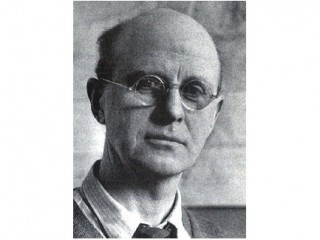
Charles Elton biography
Date of birth : 1900-03-29
Date of death : 1991-03-01
Birthplace : Liverpool, England
Nationality : English
Category : Science and Technology
Last modified : 2011-12-21
Credited as : zoologist and animal ecologist, studied invasive organisms, wrote Animal Ecology
0 votes so far
Charles Elton was educated at Liverpool College and Oxford University, from which he graduated in zoology in 1922, and where he subsequently had his entire academic career. Elton's professional goal was to turn natural history into the science of ecology by applying the scientific method to study the lives of animals in their natural habitats and their interactions with the environment. In 1921, while still an undergraduate, he was assistant to Julian Huxley on an expedition to Spitsbergen. Here, he made an ecological survey of Arctic vertebrates, a project he continued on three subsequent Arctic expeditions in 1923, 1924, and 1930. His Arctic experience led to a consultancy with the Hudson's Bay Company, 1926–1931, which enabled him to study fluctuations in the populations of animal species of interest to the fur trade. Later, he undertook similar studies on British mouse and vole populations.
Elton's early career was strongly influenced by Alexander Carr-Saunders, Victor Ernest Shelford and Gordon Hewitt. In 1922 Alexander Carr-Saunders wrote The Population Problem: A Study of Human Evolution where he outlines the influence of overpopulation in humans having cascading effects on plant and animal life around the world.
Elton later applied these ideas of population fluctuations to animals. Victor Ernest Shelford wrote Animal Communities in Temperate America in 1913, where he outlines three main principles of ecology, (a) emphasizing the importance of studying the physiology of the organism, rather than the physiology of a specific organ; (b) evaluating the “phenomena of behavior and physiology” in relation to the natural environments; and (c) relating the ecology of plant life to that of animal life. From Gordon Hewitt's 1921 book The Conservation of the Wildlife of Canada, Elton noticed the Canadian Lynx and Snowshoe Hare population cycles, and developed a greater understanding of population fluctuations in Arctic vertebrates with the Hudson's Bay Company.
In 1932, Elton established the Bureau of Animal Population at Oxford, which became a center for the collection of data on fluctuations in animal populations. In the same year, the Journal of Animal Ecology was founded and Elton became its first editor. In 1936, he was appointed reader in animal ecology at the Oxford University and Corpus Christi College elected him a senior research fellow. During the Second World War the Bureau of Animal Population was given the task to find efficient methods for the control of rats, mice and rabbits by the Agricultural Research Council. After the Second World War, Elton started a 20-year survey of animals and their interrelationships on Oxford University's Wytham estate, including animals in meadows, woods and water. After his retirement, he did some studies in tropical America. He held a great interest in nature conservation and problems in management of nature reserves and he was instrumental in establishing the Nature Conservancy Council in 1949. He was elected Fellow of the Royal Society in 1953 and received the society’s Darwin Medal in 1970.
In 1927, Elton published his now classic book Animal Ecology. This book outlines the important principles of ecological studies of animal behaviour and life history, such as food chains, the size of food items, the ecological niche and the concept of a pyramid of numbers as a method of representing the structure of an ecosystem in terms of feeding relationships. In later works on the niche theory, Elton’s definition – the Eltonian niche – in terms of functional attributes of organisms (or its position in the trophic net), has been viewed by some authors as opposed to Joseph Grinnell’s earlier definition emphasizing states of the environment suitable for the species. However, others have argued that there are more similarities than dissimilarities between the two versions of the niche concept.
After the Second World War, Elton became much more concerned with the impact of invasive species on natural ecosystems. His 1958 book The Ecology of Invasions by Animals and Plants founded invasion ecology as a separate sub-discipline. The first part of the book focuses on the invader species and their mode of transport into the new environment. The second part of the book focuses on the struggle between invasive species and the indigenous, though some invaders enter habitats with no prior species filling their specific niche. The final part of The Ecology of Invasions by Animals and Plants deals with the issue of conservation and its importance in order to maintain species diversity.
Author of books:
-Animal Ecology (1927)
-Animal Ecology and Evolution (1930)
-Ecology of Animals (1933)
-Voles, Mice and Lemmings (1942)
-The Ecology of Invaders (1950)
-The Control of Rats and Mice (1954)
-The Ecology of Invasions of Animals and Plants (1958)
-The Pattern of Animal Communities (1966)
















